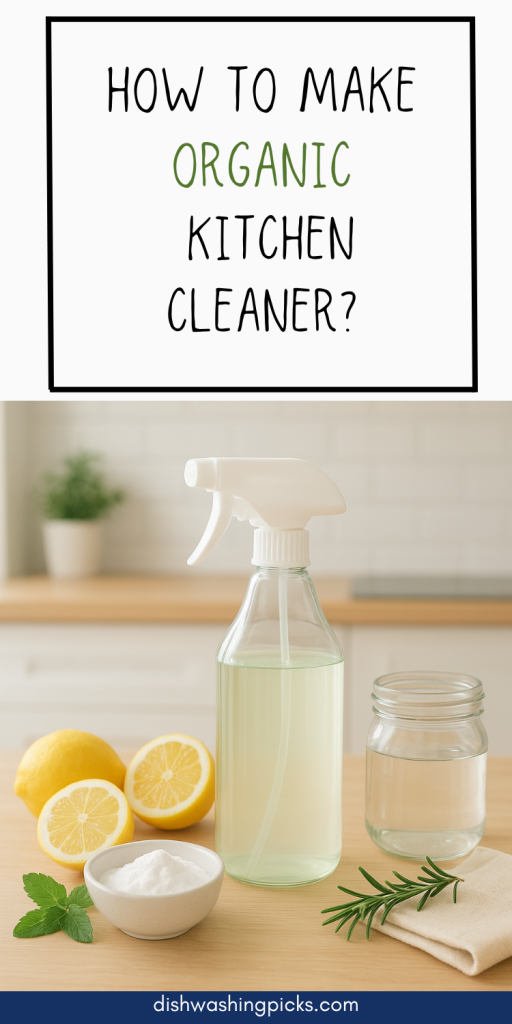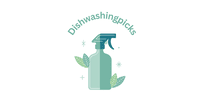
Be honest for a second—have you ever sprayed down your kitchen counters with some store-bought cleaner, taken a big whiff, and thought, “Wait… am I cleaning my kitchen or fumigating it?” Yeah, same. Those chemical clouds hit hard.
That’s where organic kitchen cleaners come in. They’re simple, safe, and won’t leave you wondering what kind of mystery cocktail you just inhaled. And the best part? You can make one yourself at home with stuff you probably already have lying around.
Why even bother going organic?
Good question. I mean, sure, the brightly-colored bottles at the store do promise sparkling countertops and lemony freshness. But flip them over, and suddenly you’re reading ingredients that look like they belong in a science lab, not near your cutting board.
An organic cleaner? Totally different story. You know what’s in it. You picked what’s in it. Vinegar, baking soda, essential oils—real, safe ingredients you could actually explain to a five-year-old without sounding like a mad scientist.
Plus, you’re doing the planet a little favor by skipping unnecessary toxins. And let’s be honest, it feels kinda cool to whip out a spray bottle and casually say, “Oh this? Yeah, I made it.”
What you’ll need (spoiler: not much)
Alright, here’s your short shopping list. You’ll laugh at how basic this is:
- White vinegar (the good ol’ cheap gallon works fine)
- Baking soda (your grease-busting sidekick)
- Lemon or orange peels (because who doesn’t love a little citrus zing?)
- Essential oils (optional, but lavender or tea tree smell amazing and add extra cleaning power)
- A spray bottle (bonus points if you reuse an old one—hello, eco-friendly hero)
That’s it. No “rare ingredient only sold online for $49.99.” Just regular kitchen stuff.
The “recipe” (if you can even call it that)
Here’s the easiest DIY you’ll ever try:
- Fill your spray bottle halfway with vinegar.
- Add about a tablespoon of baking soda (watch out for the fizz—it’s like a mini science fair in your kitchen).
- Toss in a handful of citrus peels if you’ve got them.
- Top it off with water until the bottle’s nearly full.
- Add 10–15 drops of essential oil if you want extra scent and cleaning oomph.
Shake it up gently, and… that’s it. Seriously. You’ve just made your own organic cleaner.
How to actually use it
Now for the fun part: spraying everything in sight. This cleaner works wonders on:
- Counters → bye-bye sticky spots and crumbs.
- Sinks → sparkle city.
- Stovetops → grease doesn’t stand a chance.
- Cabinet doors → especially those mystery fingerprints (how do they always get there?).
One little caveat: if you’ve got natural stone countertops like granite or marble, skip the vinegar. Acid + stone = not a happy combo. For those, just stick with mild soap and water.
A couple of pro tips
- Make small batches so it’s always fresh.
- Keep the bottle labeled (trust me, you don’t want someone mistaking it for “homemade lemonade”).
- Switch up the citrus or oils for different scents. Today it’s orange and lavender, next week it’s lemon and peppermint—look at you, crafting seasonal vibes.
Wrapping it up
At the end of the day, making your own organic kitchen cleaner is less about scrubbing and more about peace of mind. You know exactly what’s in it, it works, and it won’t knock you out with chemical fumes. Plus, it’s way cheaper than dropping cash on yet another store-bought spray.
So next time you’re staring down your messy counters, just imagine reaching for a bottle of something you made. Smells like victory (and maybe a hint of citrus).
Now go grab that vinegar jug and give it a try—you’ll never look at cleaning the same way again.
